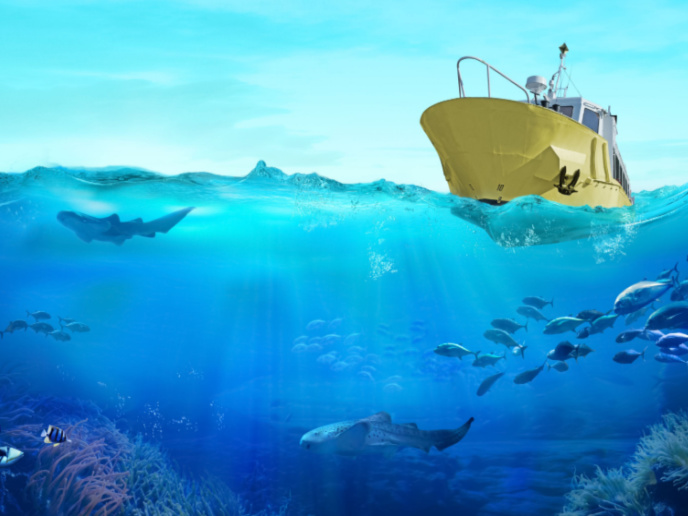Tracing a major Arctic export: oceanic carbon
The organic compounds that represent the leftovers of life fill the ocean basins and form one of the Earth’s largest carbon reservoirs. Changes to their concentration and distribution could have a major impact on the global carbon cycle, which regulates our climate. Surrounded by large land masses, the Arctic Ocean is rich in such compounds. Much of this carbon is exported to the North Atlantic through the Fram Strait between Greenland and Spitsbergen. Rising temperatures in the Arctic region are likely to increase carbon input: thawing permafrost has the potential to release vast amounts of carbon from Arctic soils, which contain 50 % of global soil carbon. The CarbEx (Tracing carbon exchanges/fluxes between Arctic and Atlantic basins) project, undertaken with the support of the Marie Skłodowska-Curie Actions programme, set out to measure and understand the dynamics of the Arctic carbon flow.
Detecting future change
“The Arctic Ocean receives a disproportionately high amount of dissolved organic matter compared to other oceans as it is surrounded by large Arctic rivers,” explains CarbEx project host Colin Stedmon. Together with his team from the National Institute of Aquatic Resources at the Technical University of Denmark, which hosts the project, and in close collaboration with the Fram Strait Arctic Outflow Observatory, he developed a method for tracing dissolved organic carbon through the Fram Strait, the passage between Greenland and Svalbard. The new approach proposed by the CarbEx team uses data collected from moorings in this strait to quantify Arctic carbon exports. The goal is to combine this data with satellite Earth observation measurements. By determining the relationship between the optical properties of carbon – how the molecules absorb and emit light – and the origins of the water observed in the surface of the Arctic Ocean, they were able to develop an algorithm capable of detecting seasonal and annual fluctuations in Arctic carbon export, and establish a baseline to detect future change. “We now have an approach to quantify how carbon exports vary from one year to the next,” says Rafael Gonçalves-Araujo, CarbEx’s principal investigator. “We expect to see significant changes in fluxes from the Arctic to the Atlantic Ocean in the coming years as the Arctic temperature, melt water contribution and dissolved organic matter supply by rivers increase.”
New perspectives
One of the key advantages of the new method is that carbon exports can be estimated based on data obtained from platforms that are not specifically focused on biogeochemical properties, opening new perspectives for increasing our understanding of the Arctic carbon cycle. The researchers also used so-called ice-tethered profilers to retrieve information regarding the origins and circulation of Arctic surface waters. “Such autonomous platforms can provide continual measurements, under the ice, in very remote regions, such as the central Arctic Ocean,” Stedmon notes. This approach could potentially also be used to separate freshwater contributions from sea-ice melt, river discharge and the Pacific Ocean. The data collected through CarbEx will continue to be updated via Norwegian and Danish research projects and observation programmes, helping to document future changes in the Arctic carbon export. “We are also analysing the data to assess whether there are variations in the composition of the dissolved organic matter, which may reflect changes in the overall Arctic circulation driven by climate change,” Gonçalves-Araujo adds.
Keywords
CarbEx, Arctic, dissolved organic matter, organic compounds, carbon reservoir, Arctic Ocean, dissolved organic carbon, Fram Strait







